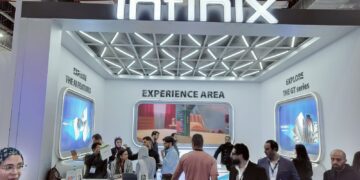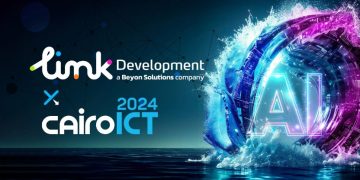Mohammed Amin/ Senior Vice President, CEEMETA, Dell Technologies.
Believe it or not, a silent transformation is currently underway within the confines of your data center. Amidst the humming servers and labyrinth of cables, this quiet but seismic shift is fueled by none other than artificial intelligence (AI). The new era of compute belongs to AI data centers designed for innovation, efficiency, and sustainability.
As businesses strive to keep up with technological advancements, the urgency to adopt AI and modernize their infrastructure has become more pronounced. According to a report by Allied Market Research, the global AI data center market is expected to reach $90.46 billion by 2027, with a compound annual growth rate (CAGR) of 20.9% from 2020 to 2027.
Across the CEEMETA region, the scenario is no different. Data centers have been experiencing significant growth, marking a fundamental shift in how organizations manage and utilize vast amounts of digital information. The integration of AI into data centers is not just about upgrading hardware; it involves a holistic approach to design and operation.
Let’s look at how AI-driven data centers can help organizations remain competitive and innovate faster than ever.
- AI-enabled data centers can analyze and harness real-time insights
Organizations today process large amounts of data, but according to the Dell Innovation Index study, 69% of IT decision makers are struggling to turn data into real time insights. By incorporating AI at the edge, businesses can analyze data center workloads in real-time, dynamically allocating resources such as computing power, storage, and bandwidth based on demand fluctuations. This optimization leads to increased efficiency and cost savings by ensuring that resources are utilized effectively, and excess capacity is minimized.
- Helps predict and prevent performance bottlenecks and failures
AI can anticipate performance bottlenecks before they occur, allowing data center operators to address issues and prevent downtime proactively. This predictive capability will enable data center operators to implement solutions before they escalate into significant problems. As a result, companies can maintain consistent performance levels, delivering reliable and high-quality services to their customers while minimizing downtime and associated costs.
- AI data centers are well-suited to advance future-ready, sustainable and energy efficient enterprises
AI workloads can be energy intensive, and recent headlines highlight concern about the increased energy demands of AI data centers in the future. Energy-efficient technology, however, has advanced enormously in the last decade. What took six servers in 2013 takes just one today. Sustainable data center solutions like storage and servers are now built with various cooling options, including liquid and air cooling, emissions tracking, and management softwares. For instance, the Dell PowerEdge servers are designed with sustainability in mind, offering customers a 3x performance improvement. It allows customers to better manage their efficiency and cooling goals, monitor carbon emissions and set power caps up to 82% faster to limit overall energy usage. This enables successful business transformation while advancing sustainability and energy efficiency across the enterprise.
- AI can secure your data with intelligent, real-time detection tools and fast recovery time Cybersecurity continues to be a pain point for organizations. These concerns are well-founded, as 93% of respondents in the Dell Technologies Innovation Catalyst Research say they have been impacted by a security attack in the past 12 months. The majority (98%) are pursuing a Zero Trust deployment strategy to protect their organizations from increasingly complex and ongoing cyber threats. AI empowers Zero Trust security models by continuously analyzing vast amounts of data to detect and respond to security threats in real-time. It can identify anomalies, suspicious activities, and potential breaches more effectively than traditional methods, ensuring only authorized users have access to the critical data. As we step into the GenAI era, the relationship between AI and cybersecurity will continue to be a symbiotic evolution.
- AI-driven automation can minimize human errors and drive team productivity
AI-driven automation streamlines data center operations, reducing the need for manual intervention and minimizing human errors. By automating routine tasks such as provisioning, monitoring, and maintenance, companies can lower operational costs associated with labor, training, and overhead expenses. This translates to significant cost savings and frees up valuable team time to focus on more strategic initiatives.
AI is not just a trendy buzzword. It is a catalyst actively reshaping how we process and manage data. As the landscape continues to evolve, now is the time to implement strategies that embrace these innovative technologies to deliver positive business, environmental and societal impact.












